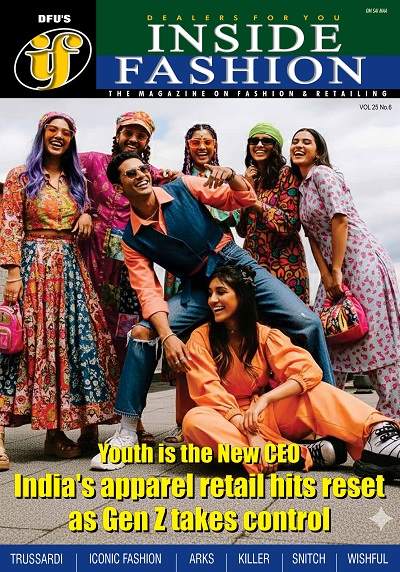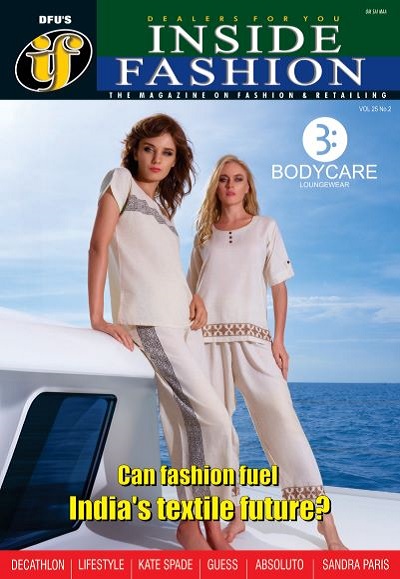20 October 2022, Mumbai:
Textiles besides mainstream business, fabrics are pertinent to the history and culture of this vibrant, functional world's largest democracy carrying a national pride ever since Mahatma/Mohandas Gandhi introduced indigenously woven cloth namely 'Khadi' as a product and an emotional mascot of the swadeshi movement to defy the colonial regime.
United We Stand Divided We Fall
For every single product/good involving merchandise export, there is a standalone export council, and (T&C) textile/apparel space is no different. Besides again in the domestic trade, there is a slew of bodies zonally, regionally, segment-wise, category-wise, and so forth.
It is very evident that with the help of these councils/associations/trade bodies only trade will stay competitively nimble & agile providing an apt fillip to trade and also enabling businesses to tap into the opportunities that it promises to offer equitably for everyone, in the seasons/years to come.
Preamble
As per government sources," Textiles Coordination Division functions as a facilitator for promotion of textiles and apparel exports in coordination with Ministry of Textiles (MoT) playing a critical role in promoting/boosting trade. The constitutionality of this is that it functions as a non-profit making company under different sections".
Similarly, several more Export councils manage India's respective exports and control the foreign textile trade in their domains. They abide by the guidelines of the Government and strive to fulfill the actual trading and export-import works as they are supposed to perform.
Find below some of the active valuable trade promotion bodies:
AEPC
"Founded in 1978, AEPC is the official organization of Indian apparel exporters and offers crucial support to domestic and foreign buyers and importers who chose India as their preferred source of clothing. Here are some examples of the accomplishments for which the Apparel Export Promotion Council (AEPC) has been responsible. In barely 30 years, it has grown from one office in 1978 to over 12. The AEPC is now a vital organization for the promotion and facilitation of garment manufacture and exports, moving beyond its original role as a quota-monitoring institution. AEPC is a one-stop shop for information advice, technical help, workforce development, and market intelligence for Indian exporters. Members gain access to the most recent trade statistics, possible markets, information on worldwide trade shows, and support for attending these shows. It also significantly impacts finding new markets and organizing trade missions to diverse nations.
TEXPROCIL
India's cotton textiles have an international presence because of the company TEXPROCIL, which promotes exports to all corners of the globe. Around 3,000 enterprises from India's key textile clusters are members of Texprocil. Its members include reputable producers and exporters of cotton textile goods like cotton, yarns, fabrics, and home textiles, with a dizzying variety of goods available at every stage of the value chain. The Council encourages communication between competent providers and foreign customers so they may source their particular needs. It details India's export environment, competitive advantages, and most recent market position.
SRTEPC
Regular updates on global product trends, trade-related concerns, technological advancements, and the most recent industry developments and current and developing markets are provided by Texprocil. Additionally, it organizes regular market research, participates in international trade shows, hosts its Buyer Seller Meets, and supports trade delegations traveling to India and other nations. One of India's first Export Promotion Councils was the Synthetic & Rayon Textiles Export Promotion Council (SRTEPC), founded in 1954.
WWEPC
The Woolen Export Promotion Council introduces international businesspeople to local exporters and producers and gives them knowledge helpful in conducting business, inviting top exporters to visit India so they may learn firsthand about the potential of the Indian Woollen Industry. Helping overseas purchasers plan their trips to India, make travel arrangements, etc. They collaborate with the planners of significant international trade shows and exhibitions to promote the range and caliber of Indian wool products overseas. Conducting market research on global markets and funding study-cum-sales delegations overseas.
Transformative role
Over the years, the Councils have played a transformative role by fostering an export culture and encouraging the export of Indian textiles and artificial fibers. These product exports, insignificant in the 1960s, increased significantly to reach US$6.16 billion in 2013–14. India currently exports to close to 140 nations. 7% of all textile exports from India come from the MMF industry, which is sustainably rising.
To place it on record India happens to be the sixth-largest exporter of MMF fabrics globally & Man-made textiles export was to the tune of US$ 6.3 Bn securing 14% market share reflecting an upward growth trajectory of 51% & 18% during the period 2021-22 Vs. FY 2020-21 and FY 2019-20, respectively.
According to government sources the hard data on where textile trade is stacked currently, "India has recorded its highest-ever textiles and apparel exports at $44.4 billion, including Handicrafts, in the financial year 2022".
Challenge the status quo
According to trade sources," India which enjoyed a respectable global place till 2015 proudly holding the second position, lost its national pride & trade market-share, precipitously fell down to a multi-year low fifth spot in the pack of order by the year 2019 accounting for an abject 4.5% of market share".
With a lack of industry's firm will, an increasing conflict of interests, and far too many associations/trade bodies within every single segment in this fragmented long Indian textile supply chain sometimes to the trade's dismay as they start to compete with each other thus letting industry underperform to its given potential.
So according to trade experts, there is an out & out pressing need for trade unleashing in almost all segments/categories of Textile/Apparel (T&A) trade.
The article makes a case that It is today's business imperative underscoring an immediate need to review the existing situations given that the Indian industry today is experiencing fundamental tailwinds of sorts in the form of China plus one global strategy albeit the Indian textile/apparel (T&C) players are now bracing up with this rising competition.





















